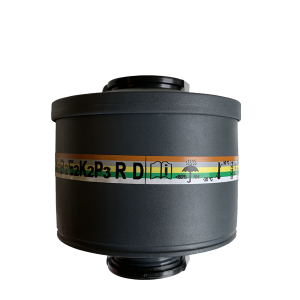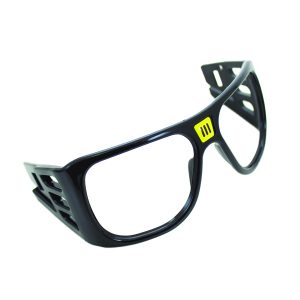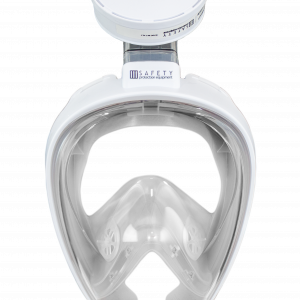Description
The 100 P3 R filter protects against aerosols, particles, mist, fumes and dust.
Filter 100 P3 R compatibility:
The 100 P3 R filter, with the standard thread connector (EN148-1, RD 40-1/7”) can be used with the full face gas masks type SGE150, SGE 400/3 and SGE 400/3 BB, or equivalent and with the APA (Aria Protection adaptor) assembled on Ocean Reef snorkeling masks (Aria and UNO series).
Filter 100 P3 R specific features:
Material housing: polypropylene
Filter media: non-woven fabric made by glass fiber
Storage: store at temperatures between -20 and + 50°C and RH <80%
Weight: approximatively 92 grams
Shelf life: 10 years if duly stored and in their original packaging
Filter compliance:
The filter complies with the EU Regulation 2016/425. Class P3 R filter, as particle filter, are in conformity to EN143:2000/A1:2006.
Filter installation:
The choice of filter depends on the type of contaminant. Firstly to use it correctly, refer to the instructions we provide with it. Once you have checked the expiration date, you can screw the filter to the connector making sure that the gasket at the bottom of the hole runs flat.
After a successful leak test and filter control, it is possible to enter a contaminated area.
Most importantly you must replace the filter when the user begins to perceive the smell or taste of the dangerous substance or in case of irritation. You should replace dust filters should when respiratory resistance becomes too high.
Filter durability:
The service life of a respiratory filter depends on its size and on the conditions of use. Factors affecting service life: concentration of the contaminants, combination of the contaminants, air humidity, temperature, duration of use and breathing rate of the user.
Since the service life is influenced by many factors, it is not possible to give an estimated service life.
The end of service life is generally recognizable by a noticeable taste or smell of the contaminant, an increased breathing resistance and combination of a noticeable taste or smell and/or an increased breathing resistance



